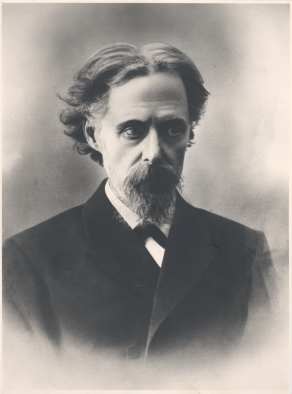August Rauber
August Rauber (1841–1917) was a German anatomist and embryologist known for his contributions to the field of developmental biology. Rauber's work focused on the early stages of human development, and he is credited with several discoveries that have helped shape our understanding of human embryology.
Biography[edit | edit source]
August Rauber was born in 1841 in Germany. He pursued his medical studies at various German universities, where he developed a keen interest in anatomy and embryology. After completing his studies, Rauber dedicated himself to academic and research work, contributing significantly to the fields of anatomy and embryology.
Throughout his career, Rauber was involved in teaching and research, holding positions at prestigious institutions. His work was widely recognized and respected in the scientific community, and he published numerous papers and books on topics related to human development and anatomy.
Contributions to Embryology[edit | edit source]
Rauber's research in embryology was groundbreaking. He was among the first to study the early stages of human development, focusing on the formation and differentiation of tissues in the embryo. One of Rauber's notable contributions was his work on the blastula stage of development, where he described the process of cell division and differentiation that leads to the formation of various tissues and organs.
He also made significant contributions to the understanding of the germ layers - the ectoderm, mesoderm, and endoderm - which form during embryonic development and give rise to all the organs and tissues of the body. Rauber's work helped to elucidate the roles of these germ layers in human development, laying the groundwork for future research in embryology and developmental biology.
Legacy[edit | edit source]
August Rauber's contributions to the field of embryology have had a lasting impact on the study of human development. His research provided valuable insights into the complex processes that occur during the early stages of embryonic development, and his work continues to be cited by researchers in the field.
Rauber's dedication to understanding the intricacies of human development has made him a respected figure in the history of anatomy and embryology. His work has paved the way for advances in developmental biology, contributing to our understanding of the fundamental processes that govern human development.
Selected Works[edit | edit source]
Rauber authored several influential works in the field of embryology and anatomy. Some of his most notable publications include:
- Title of Work 1 - A detailed study on the early stages of embryonic development.
- Title of Work 2 - An exploration of the differentiation of germ layers in the human embryo.
- Title of Work 3 - A comprehensive textbook on human anatomy and embryology, widely used by students and researchers in the field.
See Also[edit | edit source]
Search WikiMD
Ad.Tired of being Overweight? Try W8MD's physician weight loss program.
Semaglutide (Ozempic / Wegovy and Tirzepatide (Mounjaro / Zepbound) available.
Advertise on WikiMD
|
WikiMD's Wellness Encyclopedia |
| Let Food Be Thy Medicine Medicine Thy Food - Hippocrates |
Translate this page: - East Asian
中文,
日本,
한국어,
South Asian
हिन्दी,
தமிழ்,
తెలుగు,
Urdu,
ಕನ್ನಡ,
Southeast Asian
Indonesian,
Vietnamese,
Thai,
မြန်မာဘာသာ,
বাংলা
European
español,
Deutsch,
français,
Greek,
português do Brasil,
polski,
română,
русский,
Nederlands,
norsk,
svenska,
suomi,
Italian
Middle Eastern & African
عربى,
Turkish,
Persian,
Hebrew,
Afrikaans,
isiZulu,
Kiswahili,
Other
Bulgarian,
Hungarian,
Czech,
Swedish,
മലയാളം,
मराठी,
ਪੰਜਾਬੀ,
ગુજરાતી,
Portuguese,
Ukrainian
Medical Disclaimer: WikiMD is not a substitute for professional medical advice. The information on WikiMD is provided as an information resource only, may be incorrect, outdated or misleading, and is not to be used or relied on for any diagnostic or treatment purposes. Please consult your health care provider before making any healthcare decisions or for guidance about a specific medical condition. WikiMD expressly disclaims responsibility, and shall have no liability, for any damages, loss, injury, or liability whatsoever suffered as a result of your reliance on the information contained in this site. By visiting this site you agree to the foregoing terms and conditions, which may from time to time be changed or supplemented by WikiMD. If you do not agree to the foregoing terms and conditions, you should not enter or use this site. See full disclaimer.
Credits:Most images are courtesy of Wikimedia commons, and templates Wikipedia, licensed under CC BY SA or similar.
Contributors: Prab R. Tumpati, MD

